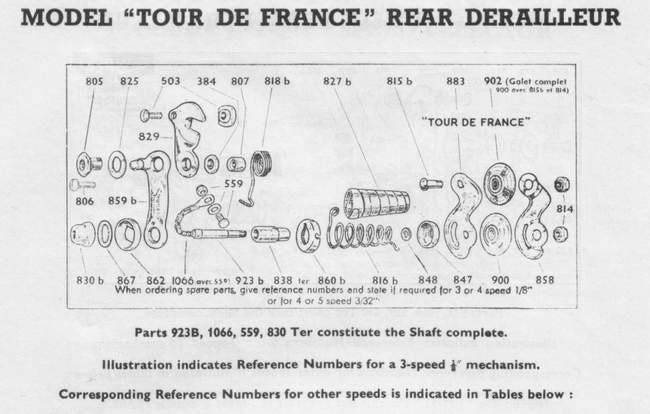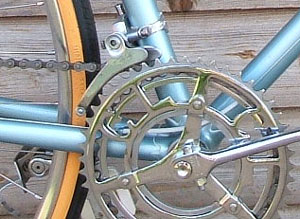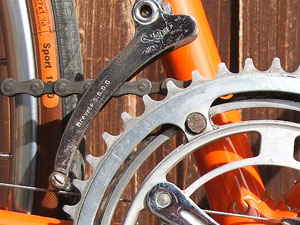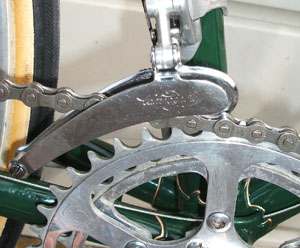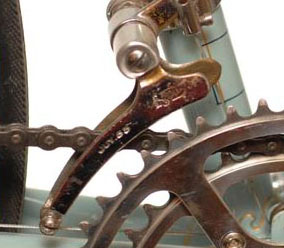Front Changers
Posted: Monday 21st September 2020
Considering the amount of ink spilt over rear mechs it is surprising how little is written about the front mech. Maybe this is because being simpler they are seen as somehow less interesting . Looking at quite a few bikes it is surprising how many front mechs are incorrectly fitted. The key to
successful changing is as follows:
Height – the outer cage needs to be only one to two mm above the outer chainring teeth
Alignment – the cage side plates should be parallel to the chainring when viewed from above.
Side to side adjustment – the limit screws should be set so the mech will operate without rubbing the chain except in the extremes, small /small and big/big, which should not be used.
I have found careful bending of the cage at the front can assist in eliminating rubbing by the chain.
A bare wire set up is preferable as the cable inside the short outer will rust very quickly.
If you are using a small outer eg 44T or less you may find the tail of the cage is too long and will foul the rear mech cable. Try to find a mech with shorter cage or re-route the cable under the bottom bracket.
Judging by the number of right hand cranks I see marked by the front cage, many cyclist do not set their mechs up correctly . Even with cranks such as TA which have a small distance between crank and chain ring it is perfectly possible to set up a front mech with out rubbing. You need to avoid using a modern front mech which will usually have a wider cage at the rear than front (of course Classic Lightweight readers would never dream of using such a modern mech!).
I would add that I sometimes find it useful to slightly bend the front of the inner derailleur cage inboard towards the chain, if the chain doesn’t pick up and shift quickly enough while upshifting to the large chainring. Just a little bit of bending can make quite a difference.
On some changers where the arm ‘swings’, Simplex rod changer for example,
the cage seems to drop a little so an extra millimeter or so clearance may be needed.
Front Mech models – The classic Campag record design, copied by most other manufacturers should provide excellent shifting up to an 18 tooth range. If you are using a triple (age catching up ?) then I recommend using a Simplex or Huret with the deep back plate which is an excellent aid to shifting up . The Campag Grand Sport (matchbox) is only really effective up to about 12 teeth. Campag did not really change their next mech design until the late 80’s there being very little difference in terms of performance between the Record, Nuovo Record , Victory etc . The Simplex Prestige front (the one with the plastic band and red dot) is based on an obsolete design it only shifts up to about 10 teeth difference and after awhile the plastic will crack. I rate Huret front mechs highly, solid reliable shifting and most have that old fashioned look. Unlike rear changers the higher priced front are not necessarily the most effective. I find the models with steel side plates far better than those with alloy as the later can flex and cause poor shifting. When buying second-hand check for bent side plates, excessive wear on inner plates and weak springs, reject if any of these are present.
Posted: Monday 21st September 2020
Contents
This article appears in the following categories.
Upcoming Events
Whether you are looking for a gentle social meet up, or a 100-mile ride browse the community’s upcoming events and plan your next weekend outing.
